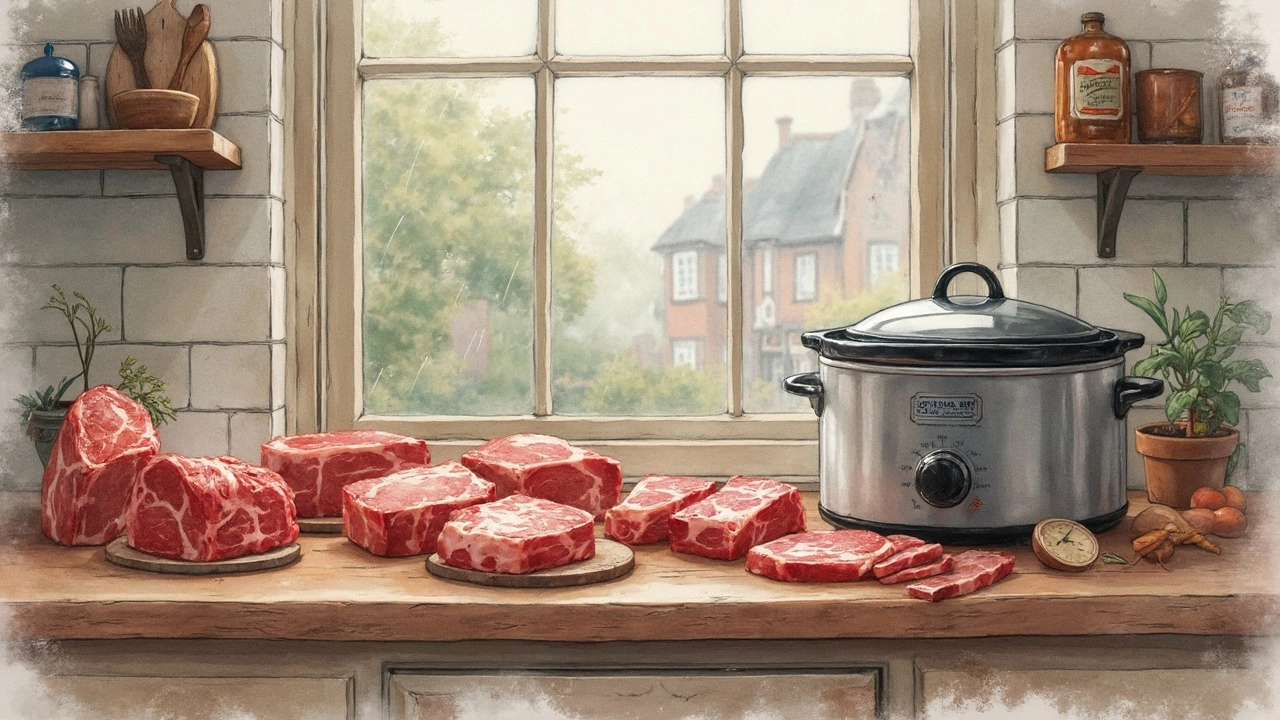Tender Beef: Simple Tricks for Juicy, Melt‑In‑Your‑Mouth Meals
Ever cut into a steak and hear a sad crackle? Nothing ruins a dinner faster than tough beef. The good news is you don’t need a fancy chef’s knife or expensive equipment to fix it – just a few easy habits that turn any cut into a tender winner.
Why Beef Gets Tough and How to Prevent It
Most of the time beef goes hard because the muscle fibers tighten during cooking. That happens when you crank up the heat too fast or leave a roast in the oven for too long. A lot of people think you have to cook it low and slow, but that’s only part of the story. The cut you choose matters a lot. Tenderloin, ribeye, or sirloin are naturally soft, while chuck, brisket, and round are full of connective tissue and need extra help.
Another sneaky culprit is salt. Adding salt right before cooking can pull moisture out of the meat, making it dry. Instead, season a little early or wait until the last few minutes. And don’t forget to let the meat rest after it’s cooked – that lets the juices settle and the fibers relax.
Top Methods to Make Beef Tender Every Time
1. Marinate with Acid. A splash of lemon juice, vinegar, or even yogurt breaks down protein. Keep the marinating time short – 30 minutes for thin cuts, up to 4 hours for tougher pieces. Too long can make the texture mushy.
2. Use a Meat Mallet. Lightly pounding the steak flattens the fibers. You don’t need to flatten it completely; just a few taps on each side is enough to make a noticeable difference.
3. Slow Cooker Magic. For chuck or brisket, toss the meat into a slow cooker on low for 6‑8 hours with a bit of broth. The low, steady heat melts the collagen, turning a tough cut into buttery‑soft slices – perfect for tacos or shredded beef sandwiches.
4. Salt‑Baking (Dry Brine). Sprinkle the beef with kosher salt and let it sit uncovered in the fridge for an hour or two. The salt draws out moisture, then the meat reabsorbs it, seasoning the inside and keeping it juicy.
5. Cook to the Right Temp. Use a cheap instant‑read thermometer. For medium‑rare, pull the meat at 130°F (54°C); it will rise a few degrees while resting. Overcooking even a tender cut can make it rubbery.
Combine these tricks with a good recipe, and you’ll have tender beef for any occasion – whether you’re whipping up a quick stir‑fry, a weekend roast, or a hearty stew. The key is to respect the cut, control the heat, and give the meat a chance to rest. Give it a try tonight and feel the difference in every bite.
Why Beef Stays Tough in a Slow Cooker and What to Do About It


